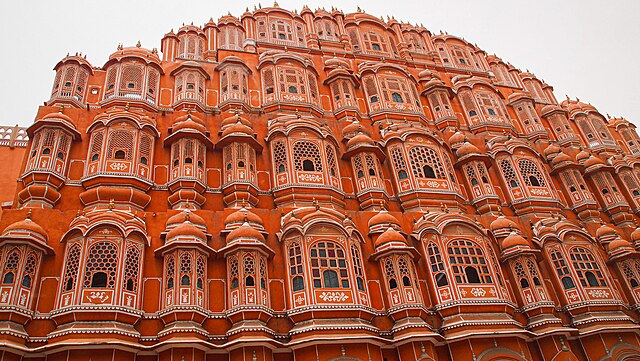Have you ever wondered why a city would be nicknamed after a color? Jaipur, the capital of Rajasthan, India, proudly wears the title of the Pink City, and it’s not just a catchy name—it’s a vibrant story painted across its streets, forts, and palaces. Imagine walking through a city where every building seems to blush under the sun, where history whispers through rose-tinted walls, and where culture dances in every corner. That’s Jaipur for you! In this article, we’ll unravel why Jaipur is called the Pink City, explore its architectural gems, dive into its cultural heartbeat, and give you all the tips to plan a visit. Ready to step into a world of pink? Let’s go!
A Glimpse into Jaipur’s Vibrant History
Jaipur’s story is as colorful as its nickname. Founded in 1727 by Maharaja Sawai Jai Singh II, this city was a bold vision of urban planning in an era when most cities grew organically. Jaipur wasn’t just thrown together—it was meticulously designed with a grid-like layout, wide streets, and a purpose: to be a trade and cultural hub. But what makes it pink? That’s where the tale gets juicy.
The Founding of Jaipur
Maharaja Jai Singh II wasn’t your average ruler. A scholar, astronomer, and visionary, he wanted a capital that reflected his grandeur and intellect. He moved his court from Amber, a nearby hilltop fortress, to the plains below, creating Jaipur as a planned city. Think of it like a royal chessboard—every square, every street, every market was strategically placed. This was revolutionary for 18th-century India, making Jaipur one of the first planned cities in the country. Its orderly layout still impresses urban planners today!
Why Pink? The Story Behind the Color
Here’s the fun part: Jaipur wasn’t always pink. In 1876, when the Prince of Wales (later King Edward VII) visited, Maharaja Ram Singh decided to give the city a makeover. Pink was the color of hospitality in Rajasthani culture, so he ordered the entire city painted a warm, terracotta pink to welcome the royal guest. It wasn’t just a superficial glow-up—the pink symbolized warmth, welcome, and pride. The tradition stuck, and even today, the old city’s buildings are maintained in shades of pink, earning Jaipur its iconic nickname. Isn’t it wild how a single visit changed a city’s identity forever?
The Architectural Marvels of the Pink City
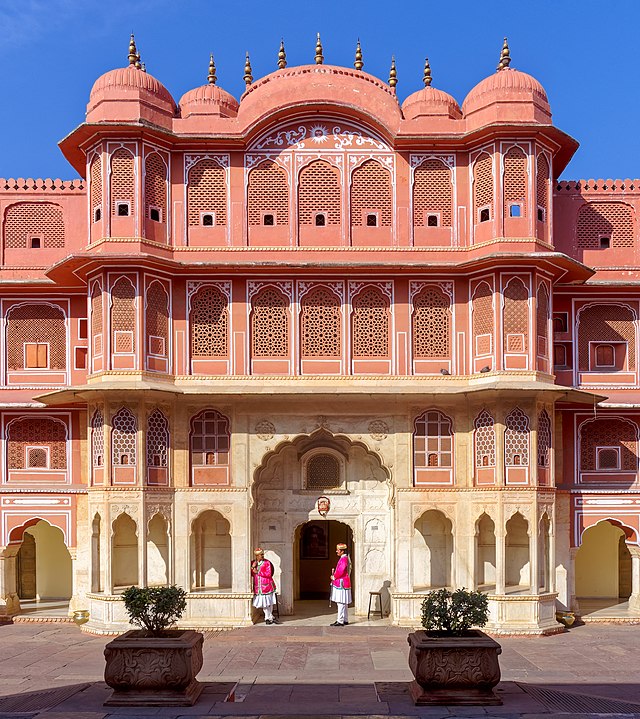
Jaipur’s architecture is like a love letter to history, written in stone and painted pink. From breezy palaces to astronomical wonders, the city’s landmarks are a testament to Rajput and Mughal craftsmanship. Let’s explore some of the stars of this pink show.
Hawa Mahal: The Palace of Winds
Picture this: a five-story palace with 953 delicate windows, each one like a honeycomb letting in whispers of breeze. That’s Hawa Mahal, or the Palace of Winds. Built in 1799, this pink sandstone marvel was designed for the royal women to watch street festivals without being seen. Its intricate latticework and curved facade make it look like a crown glowing in the sunlight. Visiting Hawa Mahal feels like stepping into a fairy tale—can you imagine the stories those walls could tell?
Amber Fort: A Regal Masterpiece
Perched on a hill just outside Jaipur, Amber Fort (or Amer Fort) is a showstopper. This massive fortress, with its golden-hued walls and intricate mirror work, blends Rajput and Mughal styles seamlessly. Wander through its courtyards, marvel at the Sheesh Mahal (Mirror Palace), and soak in the views of Maota Lake below. It’s not pink, but its grandeur complements Jaipur’s rosy charm. Pro tip: Take an elephant ride up to the fort for a truly royal experience!
City Palace: The Heart of Royalty
Smack in the center of Jaipur lies the City Palace, a sprawling complex that’s part museum, part royal residence. Its pink facades, ornate gateways, and lush courtyards scream opulence. The palace houses artifacts like royal costumes and weapons, giving you a peek into the lives of Jaipur’s maharajas. It’s like walking through a living history book—every corner has a story to tell.
Jantar Mantar: A Celestial Wonder
Ever seen a giant sundial that’s scarily accurate? Jantar Mantar, a UNESCO World Heritage Site, is an open-air observatory built by Jai Singh II. Its massive instruments, like the Samrat Yantra, track celestial Josephine stars with time and constellations. It’s a mind-boggling blend of science and pink architecture—proof that Jaipur’s founder was a genius ahead of his time.
Cultural Richness of Jaipur
Jaipur isn’t just about pretty buildings; it’s a cultural explosion. From festivals that light up the night to markets buzzing with life, the Pink City’s soul is as vibrant as its walls.
Festivals That Light Up the City
Jaipur knows how to party. The Teej Festival, celebrating the monsoon and love, fills the streets with processions, music, and dance. Then there’s the Jaipur Literature Festival, a global gathering of writers and thinkers. These events are like a shot of adrenaline, showcasing the city’s love for life. Ever been to a festival where elephants, camels, and dancers steal the show? Jaipur’s got you covered.
Handicrafts and Local Markets
Jaipur’s markets are a treasure trove of colors and crafts. Johari Bazaar sparkles with gemstones and jewelry, while Bapu Bazaar is a haven for textiles and souvenirs. Bargaining is an art here, so channel your inner negotiator! You’ll find everything from blue pottery to embroidered jootis (traditional shoes). It’s like diving into a kaleidoscope of Rajasthani creativity.
The Art of Block Printing and Jewelry
Ever tried block printing? Jaipur’s artisans carve intricate designs onto wooden blocks, dip them in dye, and stamp vibrant patterns onto fabric. It’s mesmerizing to watch. The city’s also famous for Kundan and Meenakari jewelry, where gemstones are set in gold with colorful enamel work. These crafts aren’t just products—they’re pieces of Jaipur’s soul.
Why Jaipur’s Pink Hue Captivates Tourists
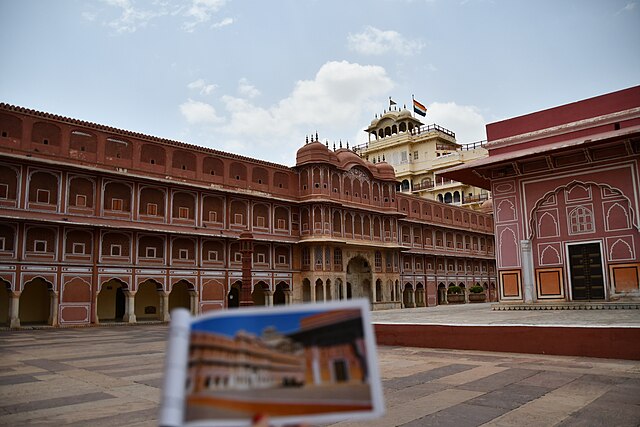
There’s something magical about a city bathed in pink. It’s not just the color—it’s the vibe. Jaipur feels like a warm hug, inviting you to explore its nooks and crannies.
A Visual Feast for Travelers
Walking through Jaipur’s old city is like stepping into a painting. The pink buildings glow at sunset, creating a surreal backdrop for your adventures. Whether you’re snapping photos or just soaking it in, the city’s aesthetic is unforgettable. Can you picture yourself sipping chai against a pink skyline?
Modern-Day Pink City: Blending Tradition with Today
Jaipur isn’t stuck in the past. Boutique hotels, trendy cafes, and art galleries sit alongside ancient forts. You can enjoy a rooftop dinner with views of the pink cityscape or shop for modern takes on traditional crafts. It’s the perfect mix of old and new, like a classic song with a fresh beat.
Must-Visit Attractions Beyond the Pink Facades
While the pink buildings steal the spotlight, Jaipur’s other attractions are just as captivating. Let’s venture beyond the rosy walls.
Nahargarh Fort: A Panoramic Retreat
Nahargarh Fort sits atop a hill, offering jaw-dropping views of Jaipur’s pink expanse. Built as a defense fortress, it’s now a serene spot for sunset lovers. The fort’s Padao Restaurant is perfect for a romantic evening under the stars. Who wouldn’t want to dine with a city twinkling below?
Jaigarh Fort: The Cannon Fortress
Home to the world’s largest cannon on wheels, Jaigarh Fort is a military marvel. Its rugged walls and strategic location tell tales of Rajput valor. The views of Amber Fort and the Aravalli hills are worth the trek. It’s like standing on the edge of history.
Patrika Gate: Instagram’s Favorite Spot
This vibrant gateway, adorned with colorful murals, is a modern addition to Jaipur’s charm. Built as an entrance to Jawahar Circle Park, it’s a photographer’s dream. The intricate designs depict Rajasthan’s culture—perfect for that Insta-worthy shot. Ready to strike a pose?
Culinary Delights of the Pink City
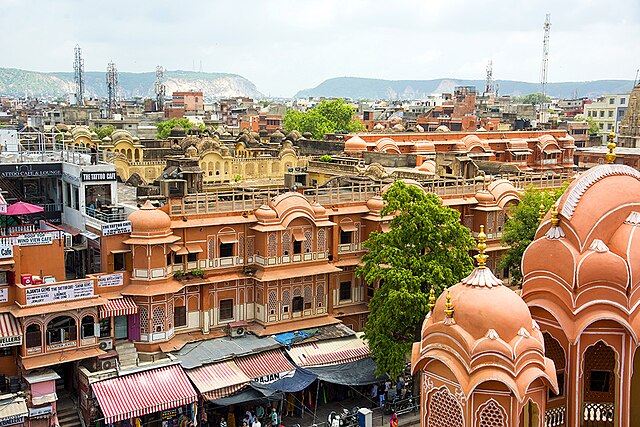
Jaipur’s food scene is a flavor bomb. Rajasthani cuisine is bold, spicy, and unforgettable, reflecting the city’s fiery spirit.
Rajasthani Cuisine: A Flavor Explosion
Think dal baati churma—lentils, baked wheat balls, and sweetened crumbs—or laal maas, a fiery red mutton curry. These dishes are hearty, made for warriors and kings. Don’t miss ghevar, a sweet, disc-shaped dessert that melts in your mouth. Hungry yet?
Where to Savor Authentic Dishes
Head to Chokhi Dhani for an authentic Rajasthani thali experience, complete with cultural performances. For street food, hit LMB in Johari Bazaar for pyaaz kachori and lassi. Want something upscale? Suvarna Mahal offers royal dining in a palatial setting. Your taste buds will thank you!
Planning Your Trip to the Pink City
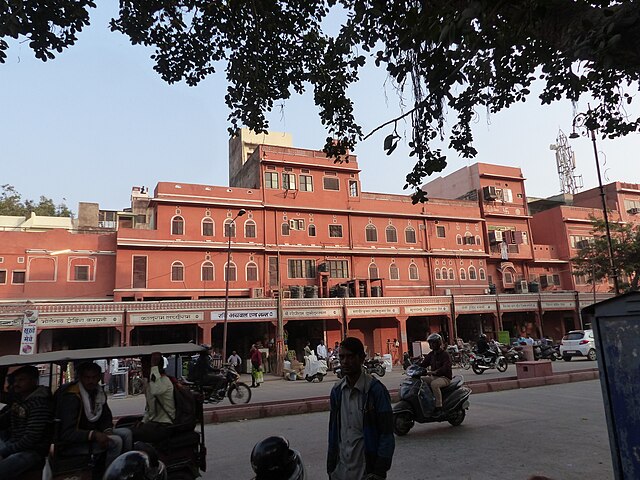
Ready to visit Jaipur? Here’s how to make the most of your Pink City adventure.
Best Time to Visit Jaipur
Winter (October to March) is ideal—cool weather and clear skies make exploring a breeze. Summers can be scorching, so plan accordingly. Festivals like Diwali or Teej add extra sparkle, but book early—Jaipur gets busy!
How to Get There and Get Around
Jaipur’s well-connected by air, rail, and road. The Jaipur International Airport welcomes domestic and select international flights. Trains and buses link it to Delhi, Mumbai, and beyond. In the city, auto-rickshaws, cabs, and cycle rickshaws are your best bets. Feeling adventurous? Rent a scooter and zip through the pink streets!
Conclusion
Jaipur, the Pink City, is more than a nickname—it’s a living, breathing masterpiece of history, culture, and color. From the breezy Hawa Mahal to the spicy laal maas, every moment in Jaipur feels like a celebration. Whether you’re a history buff, a foodie, or a wanderer, this city has something to steal your heart. So, pack your bags, grab your camera, and dive into the pink-hued magic of Jaipur. What are you waiting for? The Pink City is calling!
FAQs
1. Why is Jaipur called the Pink City?
Jaipur earned its nickname in 1876 when Maharaja Ram Singh painted the city pink to welcome the Prince of Wales, symbolizing hospitality. The tradition continues, with the old city’s buildings maintained in pink hues.
2. What are the must-visit places in Jaipur?
Key attractions include Hawa Mahal, Amber Fort, City Palace, Jantar Mantar, Nahargarh Fort, Jaigarh Fort, and Patrika Gate for a mix of history, culture, and stunning views.
3. When is the best time to visit Jaipur?
The best time is from October to March when the weather is cool and pleasant, ideal for sightseeing and outdoor activities.
4. What food should I try in Jaipur?
Don’t miss dal baati churma, laal maas, pyaaz kachori, and ghevar. Visit places like Chokhi Dhani or LMB for authentic Rajasthani flavors.
5. How can I get around Jaipur?
Use auto-rickshaws, cabs, cycle rickshaws, or rent a scooter for easy navigation. The city’s compact layout makes exploring fun and accessible.

